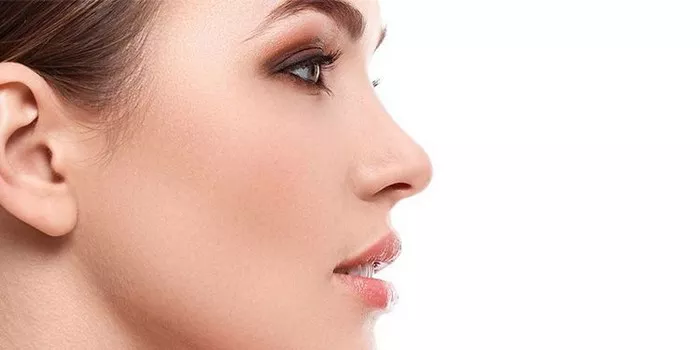Rhinoplasty, commonly known as a nose job, is a surgical procedure that aims to enhance the shape and appearance of the nose. It is a popular cosmetic surgery, sought after by individuals who wish to correct imperfections or improve their facial harmony. While the surgery itself is a significant step towards achieving the desired results, the recovery process plays a crucial role in the overall success of the procedure. In order to ensure a smooth and successful recovery, it is important to be aware of what not to do after rhinoplasty. By following these essential guidelines, patients can minimize complications and optimize their healing process.
1. Neglecting Postoperative Care Instructions
One of the most critical mistakes patients can make after rhinoplasty is neglecting the postoperative care instructions provided by their surgeon. These instructions are specifically tailored to each patient’s unique situation and must be followed diligently. They typically include information about medications, wound care, physical activity limitations, and dietary restrictions. It is crucial to strictly adhere to these instructions to promote proper healing and minimize the risk of complications.
2. Engaging in Strenuous Activities
Engaging in strenuous activities such as heavy lifting, intense workouts, or contact sports can have detrimental effects on the healing process after rhinoplasty. These activities can increase blood pressure, leading to excessive bleeding, swelling, and potential damage to the delicate nasal tissues. Patients should avoid these activities for at least four to six weeks following the surgery, or as advised by their surgeon. It is essential to allow the body to heal without unnecessary strain or trauma.
3. Exposing the Nose to Sunlight
Direct exposure to sunlight, especially during the initial stages of recovery, can have adverse effects on the healing process after rhinoplasty. Sunlight can cause the nose to swell, become discolored, and even result in permanent pigmentation changes. Patients should protect their nose from the sun by wearing a wide-brimmed hat or using a sunscreen with a high SPF. This precaution should be followed for several months post-surgery to ensure optimal healing and minimize the risk of complications.
4. Smoking or Using Tobacco Products
Smoking or using tobacco products can significantly impair the healing process after rhinoplasty. Tobacco smoke contains harmful chemicals that restrict blood vessels and diminish oxygen supply to the tissues, slowing down the body’s natural healing response. Smoking increases the risk of infection, delayed wound healing, and potential tissue necrosis. To promote proper healing and reduce the risk of complications, patients should refrain from smoking or using tobacco products for at least four weeks before and after the surgery.
5. Ignoring Nasal Hygiene
Maintaining proper nasal hygiene is crucial after rhinoplasty to prevent infection and promote healing. Patients should follow their surgeon’s instructions regarding nasal irrigation and cleaning techniques. It is common for surgeons to prescribe saline nasal sprays or recommend gentle rinsing with a saline solution. It is important to avoid blowing the nose forcefully during the initial stages of recovery to prevent damage to the delicate nasal structures. By adhering to proper nasal hygiene practices, patients can minimize the risk of complications and ensure a successful recovery.
6. Neglecting Follow-up Appointments
Follow-up appointments with the surgeon are essential after rhinoplasty. These appointments allow the surgeon to monitor the progress of healing, address any concerns or complications, and provide further guidance for the recovery process. Neglecting or skipping these appointments can hinder the overall success of the procedure and potentially lead to unfavorable outcomes. Patients should schedule and attend all recommended follow-up appointments to ensure that their healing process is on track and any issues are promptly addressed.
7. Touching or Manipulating the Nose
It is crucial to avoid touching, rubbing, or manipulating the nose unnecessarily during the recovery period. The nose will be sensitive, swollen, and delicate after rhinoplasty, and any unnecessary pressure or manipulation can disrupt the healing process. Patients should resist the temptation to touch or adjust the position of the nose, as this can cause complications or compromise the final results. It is best to keep the hands away from the nose and allow it to heal naturally under the guidance of the surgeon.
8. Wearing Glasses Incorrectly
For individuals who wear glasses, it is important to be cautious about wearing them after rhinoplasty. The weight and pressure exerted by glasses can interfere with the healing process and potentially cause complications. Patients should consult their surgeon regarding when it is safe to wear glasses again and discuss alternatives such as contact lenses or lightweight frames during the initial recovery period. By following the surgeon’s recommendations, patients can prevent unnecessary strain on the nose and promote optimal healing.
9. Overlooking Emotional and Psychological Support
Undergoing rhinoplasty can be an emotional journey, and patients should not overlook the importance of emotional and psychological support during the recovery process. It is normal to experience a range of emotions, including anxiety, impatience, or even temporary dissatisfaction with the initial appearance of the nose. Having a strong support system, whether it be friends, family, or a support group, can provide comfort and reassurance during this time. Additionally, open communication with the surgeon can address any concerns or anxieties and ensure realistic expectations for the final results.
In conclusion, a successful recovery after rhinoplasty requires diligent adherence to proper postoperative care instructions. By avoiding strenuous activities, protecting the nose from sunlight, refraining from smoking, practicing good nasal hygiene, attending follow-up appointments, avoiding unnecessary touching or manipulation, wearing glasses correctly, and seeking emotional support, patients can optimize their healing process and achieve the desired results from their rhinoplasty procedure. Patience, commitment to the recovery process, and open communication with the surgeon are key to a successful outcome and a newfound confidence in one’s appearance.

